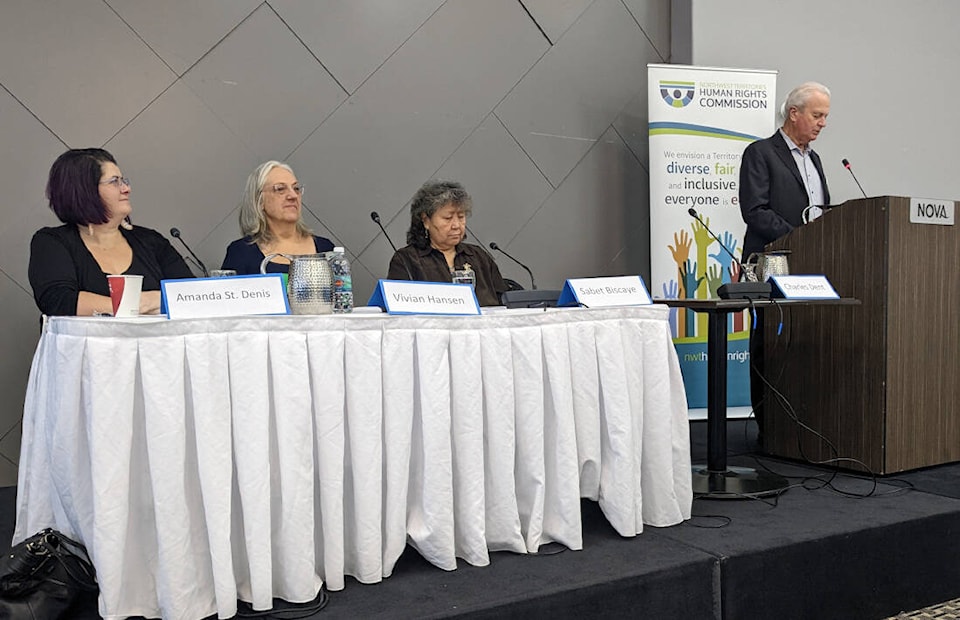Sexual harassment and violence, and how to prevent and address such incidents, were the focus of a panel discussion and luncheon on at the Chateau Nova on Dec. 9.
Charles Dent, chair of the NWT Human Rights Commission, which hosted the event, spoke about the importance of advocating for equality.
“We need to work together to actively protect equality rights,” he said. “Don’t turn away if you see something’s wrong. Make sure you speak up for equality.”
One of the questions Dent asked the panel was, “What have you found to be the main factors contributing to continuing high rates of sexual harassment and violence?”
Answering first was Vivian Hansen, Crown witness coordinator supervisor with the Public Prosecution Service of Canada. She listed several issues that contribute to the problem: “gender equity, abuse of myths, stereotypes about gender and sex, social norms that support male superiority and sexual entitlement and intimate partner violence.”
She also said that jealousy is a prominent issue.
“Jealousy is a huge concern in partnerships and in building trust. Unresolved feelings of jealousy and trauma all leads to what we’re seeing in the courts,” said Hansen.
Amanda St. Denis, workforce diversity officer with the GNWT, said she could spend days answering that one question. She chose to focus on a single issue for the sake of time.
“One thing I really want to bring up is the intersectionality of sexual harassment and violence. Gender-based violence and sexual harassment goes beyond just sex and gender.
“It’s not lost on any of us that we live in colonial patriarchy that still upholds white supremacy, upholds misogyny, upholds heteronormativity, and cisnormativity. That all feeds into… gender-based violence and sexual harassment.
“It’s not just women that are predominant victims of sexual harassment and gender-based violence,” she said. “There is more violence being perpetuated to trans folks and gender non-conforming folks, particularly Black trans women, Indigenous trans women, and two-spirit folks are of greater risk of sexual harassment.”
According to Statistics Canada data from late 2020, sexual minority — non-heterosexual and trans — Canadians (59 per cent) were much more likely than heterosexual Canadians (37 per cent) to have been physically or sexually assaulted by someone who was not an intimate partner.
Sabet Biscaye, director of the territorial government’s Gender Equality Division, said that complacency, normalization, and not recognizing sexual harassment and violence as being inappropriate were some of the main contributing factors.
She also spoke about how she helps educate people in her professional life.
“Part of our work that we do is not just about developing policy and working with communities… (but) providing the tools, and, in some cases, legislation to departments to be able to deal with this.”
She also stated the importance of spreading awareness of these types of issues and shared an example of how family can potentially make restoration more difficult. When a perpetrator is a family member in a position of power, “you’re not just battling that person, you could be battling your family and the whole community. This is something that we have to start developing awareness (of),” she explained.
